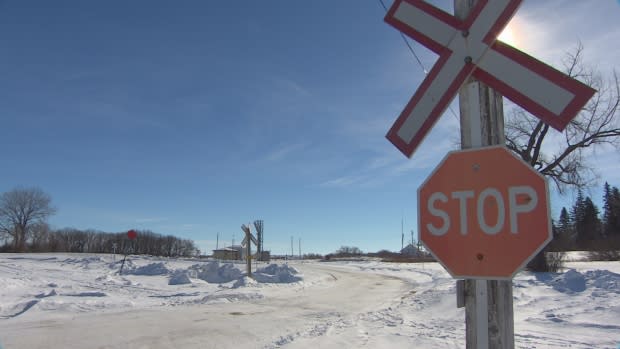Asylum seekers could increase as snow melts, but activists already strained

Provincial and federal cooperation is needed to help communities support increased numbers of asylum seekers, but according to at least one activist, local organizations are currently too busy to push them for it.
“We are behind,” Byron Cruz of Sanctuary Health said of advocating for provincial and federal action to support over-land asylum seekers. “We are very behind because each family or each person that crosses the border, working with them, supporting them, it takes a lot of effort because of all the different needs.”
As U.S. President Donald Trump introduces policies restricting entry into his country and wider deportation powers, communities along the Canada-U.S. border are seeing an increased number of asylum seekers entering Canada on foot. According to border agency data, in the 2013-2014, 68 people illegally crossed the border near the small town of Emerson, Manitoba on foot and claimed refugee status. In 2015-2016, that number was 340. And between April and December 2016, 410 people made the crossing from northwest Minnesota across the border near Emerson in order to obtain refugee status.
Similar spikes were seen in other provinces last year, and the arrivals are continuing in 2017. Quebec, Manitoba, British Columbia, and New Brunswick are seeing people walk across the border — sometimes in cold or dangerous weather conditions — in order to claim refugee status in Canada.
The total national number of refugee claims at land borders reached 7,023 in 2016, according to the border agency — a significant increase from 4,316 in 2015 and 3,747 in 2014.
It is illegal to enter Canada outside of a designated port of entry, but refugees who do so are protected from prosecution for the act because Canada is a signatory to the 1951 United Nations Refugee Convention. Once in Canada, asylum seekers can lodge a claim for refugee status at an immigration office.
There is concern among some activists and experts that the numbers of on-foot asylum seekers will increase as snow melts and temperatures go up, ultimately adding more work for local groups stretched thin to support refugees who have already arrived.
Vancouver immigration lawyer Doug Cannon told CBC News Wednesday that it’s reasonable to expect the number of asylum seekers to increase in the spring and summer, particularly as the U.S. continues to push for more deportations of undocumented people.
National plan unclear
Prime Minister Justin Trudeau confirmed that Canada intends to continue accepting asylum seekers who enter the country from the U.S., despite calls from Conservative MPs who want them directed to American border officials.
“One of the reasons why Canada remains an open country is Canadians trust our immigration system and the integrity of our borders and the help we provide people who are looking for safety,” Trudeau told Parliament Tuesday. “We will continue to strike that balance between a rigorous system and accepting people who need help.”
But details on what that help might look like, especially if refugee numbers increase, remain unclear.
“The CBSA is well poised to address increased volumes,” Canadian border services agency spokeswoman Line Guibert-Wolff told Yahoo Canada News. “We routinely monitor our operations and adjust resources if and when required. We continue to work with both domestic and international partners, and we are monitoring the situation closely.”
And while the Canada Border Services Agency said it wouldn’t speculate on whether or not irregular crossings may increase after winter, the RCMP has acknowledged that it could be a possibility.
“This is an ongoing and developing situation and we are aware that a potential exists for more people to illegally cross the border this spring,” Robert Cyrenne with RCMP media relations told Yahoo Canada News. “The RCMP is continually assessing and enhancing resources at the border to ensure we can detect and arrest individuals illegally crossing into Manitoba. This includes adding both human and technological resources.”
Cruz mentioned that the continued existence of a Safe Third Country agreement with the U.S. increases the possibility that some asylum seekers may choose not to declare refugee status once they enter the country. That’s because they rather risk staying undocumented than applying and being rejected.
“If the third-country process doesn’t change, they might decide to stay undocumented,” Cruz said. “That concerns us because [undocumented] people are left in a very vulnerable situation.”
But organizations like his don’t have much bandwidth right now for lobbying for that change, or others that would ease the situation, Cruz said
“At this time we don’t have a strategy yet to work at the national level,” Cruz said. “It will take some time for us to get in touch with all the different groups and organizations working on this.”


